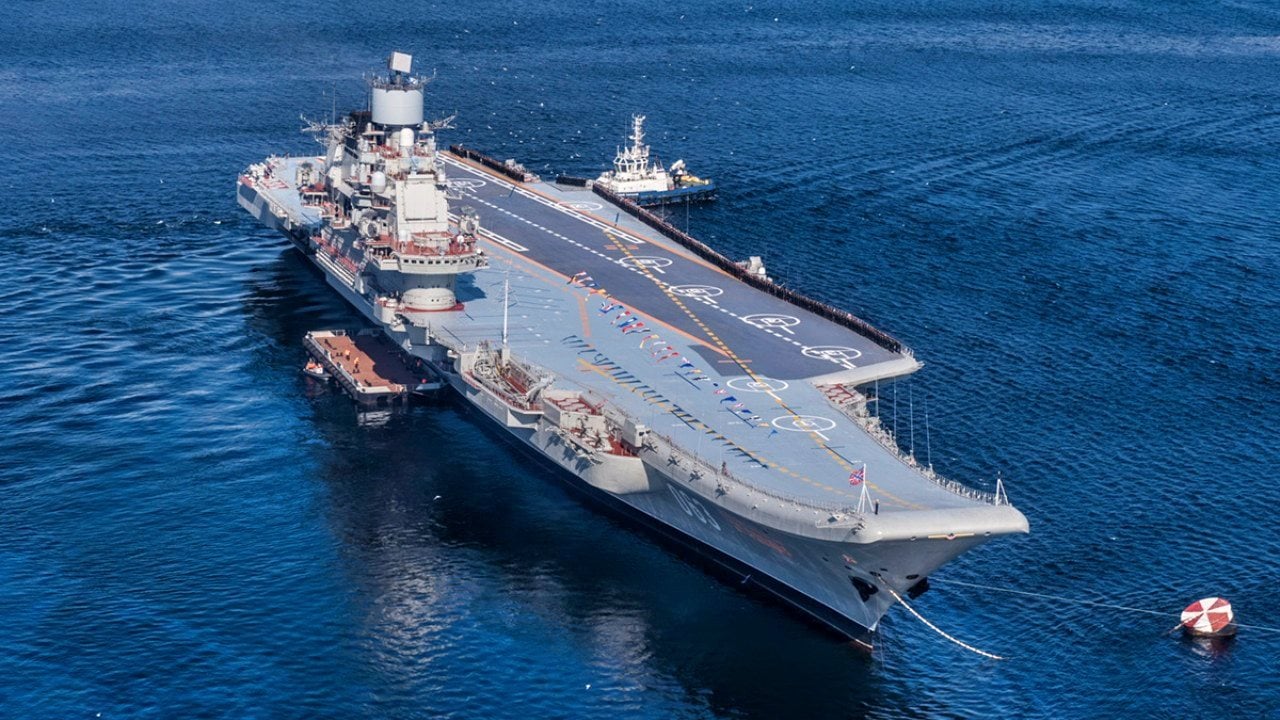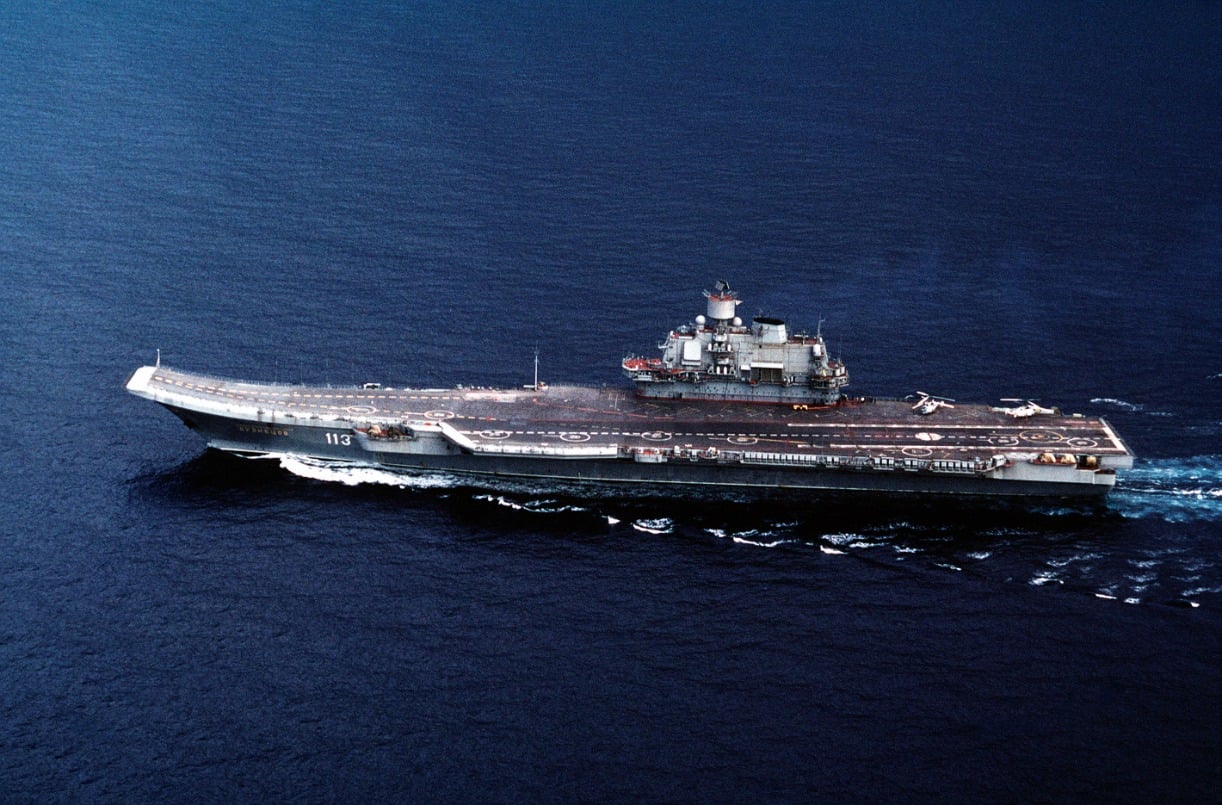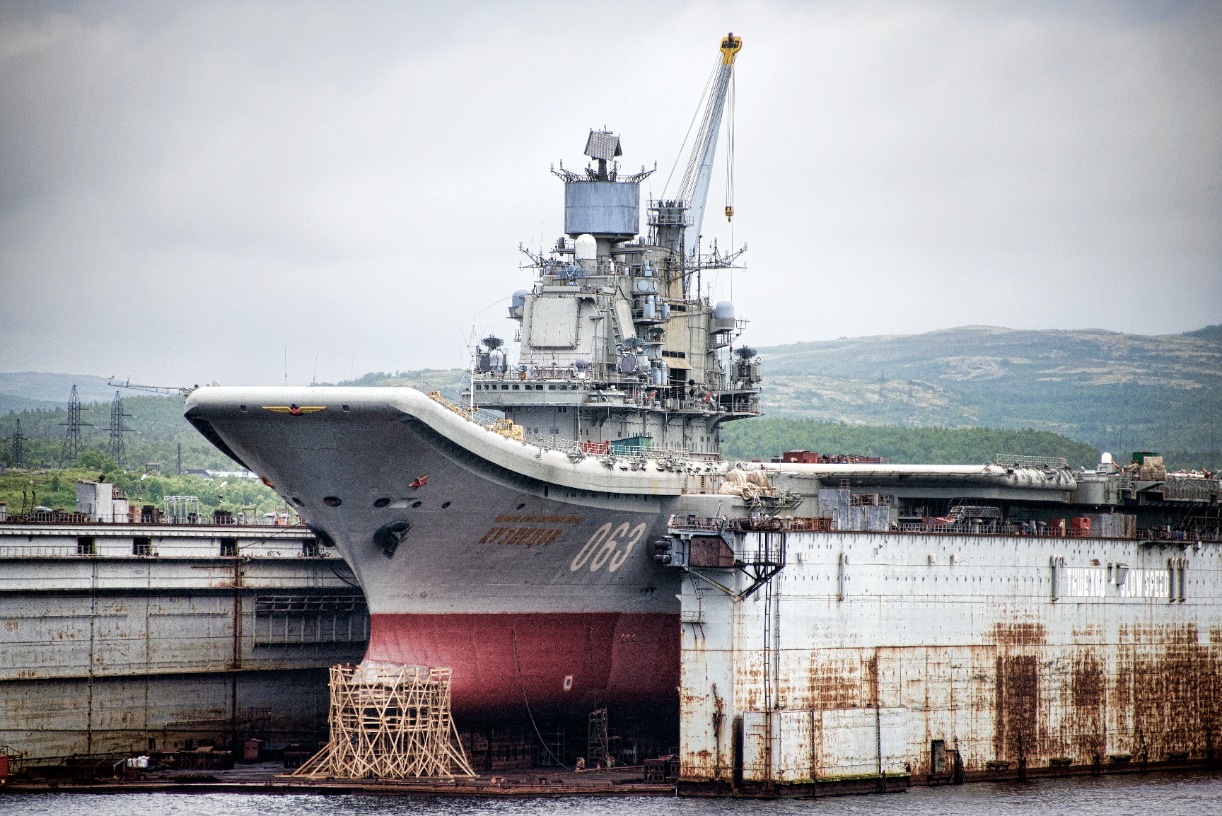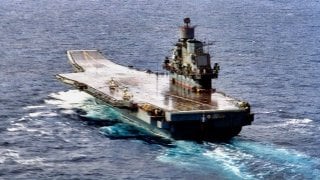Russia's Admiral Kuznetsov Aircraft Carrier Is 'A Hazard To Herself'
Russia’s lone aircraft carrier, the Admiral Kuznetsov, has been in service since 1995 and is now notorious for its numerous issues. Unlike US carriers, the Kuznetsov can only stay at sea for 45 days and operates on outdated Mazut fuel, a viscous, tar-like substance.
Summary and Key Points: Russia’s lone aircraft carrier, the Admiral Kuznetsov, has been in service since 1995 and is now notorious for its numerous issues. Unlike US carriers, the Kuznetsov can only stay at sea for 45 days and operates on outdated Mazut fuel, a viscous, tar-like substance.

-The ship has a problematic history, including fires, fuel spills, and mechanical failures, often requiring tugboat escorts.
-After a disastrous repair period since 2017, involving a sunk dry dock and multiple fires, Russia aims to return Kuznetsov to service by 2024. However, with ongoing military resource strains, the carrier’s future remains uncertain.
Russia's Admiral Kuznetsov Aircraft Carrier Is Just a Mess
The US Navy keeps a wary eye trained on Russia’s aging aircraft carrier, the Admiral Kuznetsov – but not for the reason you may think.
At one point back in 2011, what the US was watching for was the Kuznetsov to sink, becoming “a hazard to herself, her crew and anyone nearby.”
Russia's Admiral Kuznetsov Aircraft Carrier: A Disaster
Russia’s lone aircraft carrier, the Admiral Flota Sovetskogo Soyuza Kuznetsov, has been in service with the Russian Navy since 1995 – and is showing her age.
Where US carriers were built to project power onto distant land masses, the Kuznetsov was built to project power in support of Russia’s fleet of surface ships and submarines, and accordingly, she can only stay at sea for 45 days at a time (by contrast US nuclear-powered carriers can stay at sea for decades). And unlike US carriers, which can carry over one hundred aircraft, the Kuznetsov can handle just 18 Su-33s, 6 MiG-29Ks, 4 Ka-31s, and 2 Ka-27s – a much more limited fleet.
The Kuznetsov is fairly obsolete, especially with respect to its power source: Mazut. Mazut is a petro-chemical, a viscous, tar-like substance that tends to cling to sailor’s clothing. Sailors hate Mazut, which has been out of date for half a century.
Mazut was once a common source of naval energy. The substance has a high volume to energy ratio and, accordingly, was once the default fuel for commercial and military vessels. Those days are gone, however. Shipbuilders use nuclear and gas turbine power systems these days.
A Problematic Aircraft Carrier
“Admiral Kuznetsov has a problematic history,” Robert Beckhusen reports. “One seaman died when the carrier caught fire during a 2009 deployment to the Med. During the same cruise, the flattop spilled hundreds of tons of fuel into the sea while refueling. Her steam turbines are so bad the ship has to be escorted by tugs in case she breaks down.”
And if that weren’t problematic enough, “the carrier is barely capable of doing what carriers are supposed to do: launch fighters. When she does, she uses a bow ramp instead of steam catapults, which forces reductions in the planes’ takeoff weight and patrol time.”
Really, the Kuznetsov is a dog, unlikely to survive through the 2020s. The ship hasn’t served since 2017; after a deployment off the coast of Syria, the Kuznetsov was called home for repairs and retrofits. The retrofits were designed to give the ship another twenty-five years of service life. But the retrofit has not gone as intended.
While servicing the Kuznetsov, Russia’s largest floating dry dock, the PD-50, sank into the ocean.
In the process, one of the PD-50s 70-ton cranes opened a 200 square foot hole in the deck of the Kuznetsov. So, that was a disaster.

Then, in late 2019, a fire tore through the carrier, killing two workers and injuring fourteen more while causing several million dollars’ worth of damage. Another fire broke out in December 2022, this time without casualties. And just this past February, repairs were suspended on account of heavy fog. In all, things are not going well.
Russia keeps saying the Kuznetsov will return to service soon, perhaps in 2024. But don’t hold your breath.
Russia is embroiled in a conflict that continues to drain military resources. The nature of the conflict – a land-based war of attrition – means the Kuznetsov will likely slide down the hierarchy of priorities.

About the Author: Harrison Kass
Harrison Kass is a seasoned defense writer with over 1,000 articles posted. An attorney, pilot, guitarist, and minor pro hockey player, Harrison joined the US Air Force as a Pilot Trainee but was medically discharged. Harrison holds a BA from Lake Forest College, a JD from the University of Oregon, and an MA from New York University. Harrison listens to Dokken.
All images are Creative Commons.


